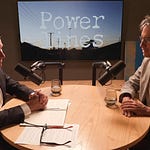Before the last election in 2022, I interviewed then-shadow energy minister Chris Bowen on the Today Show. He was selling a simple idea: more renewables mean lower electricity prices. The logic was that wind and solar are the cheapest forms of generation, so flooding the market with them would drive prices down. Labor commissioned modelling that put a dollar value on that claim: residential electricity prices would fall by $275 by 2025.
I questioned that logic.
Wholesale prices are set by the highest-cost generator—not the cheapest. And wind and solar almost never set the price of electricity at times of peak demand because those peaks occur when the sun rises and sets.
Weather-dependent energy leaves massive generation gaps, and whatever fills those gaps drives wholesale electricity prices. You could carpet the nation in wind farms and solar panels, and this will never change.
Weather-dependent systems also require 100 percent backup, massive increases in transmission and distribution, and taxpayer subsidies. And when they generate for free, they destroy the business models of the power sources we actually need to keep the lights on.
The only thing keeping the wholesale price of power down now is black and brown coal. As coal-fired plants retire, electricity prices will spike ever higher, because gas, hydro and batteries are more expensive.
And the weather-dependent system under construction will never function without a fuel source like gas backing it up—because hydro and batteries are storage, not generation. This reality is written into the Australian Energy Market Operator’s transition plan. Of course, if you want a zero-emissions dispatchable fuel source, there’s only one option: nuclear.
That coal is historically the cheapest form of power was acknowledged in Labor’s modelling, which locked in the price of black coal at the equivalent of $80 a metric ton all the way through to 2040.
But black coal is export-quality and linked to international price movements.
Through 2021, the price of black coal soared due to a global energy crunch driven by post-pandemic demand, supply chain disruptions, and China's unofficial ban on Australian coal, which distorted trade flows and tightened global supply.
Anyone with a passing interest in energy should have been well aware the price had doubled between January and August 2021—from $115 to $247. In October, it spiked to $300. That meant the wholesale price of electricity was already on a disturbing upward march long before Labor’s modelling was released.
Come February 2022, Russia invaded Ukraine, and the price of coal and gas spiked even higher. By the time the election was called in April, the price had hit $450 a metric ton—more than five times the figure baked into Labor’s modelling. Before the election in May, it reached $538.
I said in that 2022 interview with Bowen that prices would rise. They did. Bowen insisted prices would fall. They didn’t. And when they didn’t, the Energy Minister claimed government subsidies were proof his plan was working.
The wholesale price of power makes up about 30 percent of your bill—and it will rise as coal plants retire. Transmission costs—around 9 percent of your bill—will rise because widely distributed generation demands more transmission lines. Distribution costs—the poles and wires—will rise too, and that’s another 30 percent of your bill.
The short story is: the system under construction will drive every part of your power bill higher.
We now face another election.
If the Albanese Government is certain that more weather-dependent generation will drive down the cost of electricity, then it should show courage in that conviction. Commit, in this election, that power prices will fall—or, at the very least, stabilise.
I predict they will continue to rise. The only thing that can bring them down is a cheap, abundant source of fossil fuel.
Coal, anyone?
This isn’t a transition—it’s a travesty.














Share this post